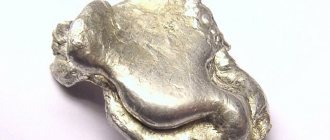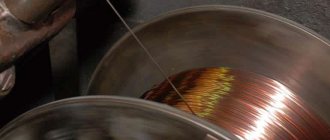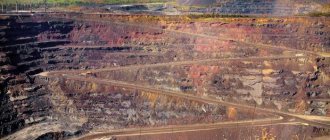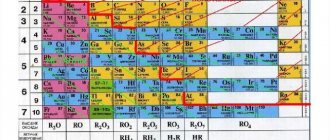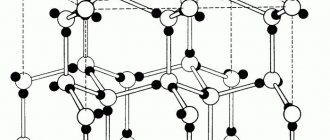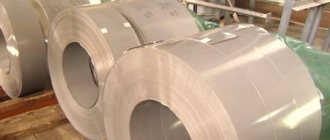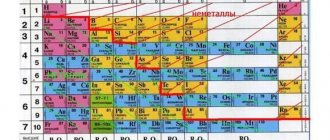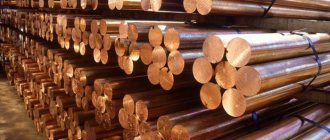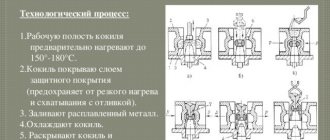With the right approach, the search and subsequent recycling of scrap metal can become a good source of additional income. When planning to engage in such activities, you need to pay special attention to preparation. In this regard, the question of places that are promising from a search point of view is especially important. There is an opinion that all metal suitable for delivery and freely available has long been disposed of. But it is not so.
If we recall the active pace of development of industry and agriculture during the Soviet period, we can very positively assess the prospects for the process of searching for scrap ferrous and non-ferrous metals. A large amount of abandoned scrap still lies both on the surface of the earth and in the soil at a shallow depth. In order for each trip to be as efficient as possible from an economic point of view, you should determine in advance a list of places where you need to look for scrap metal.
Where can you find scrap ferrous and non-ferrous metals for delivery, where to look for metal
These are mostly abandoned places and landfills, but it is important to separate the concepts of “looting” and “collecting.” Of course, if we are talking about survival, then these concepts will be blurred, but in any situation you need to move from theft to collection or simply quit with dishonest work - this is “simple” advice.
Searching for scrap metal in landfills
Here, as they say, God himself ordered to look for unnecessary metal products. Here you can find not only metal, but products made from it, for example, household appliances: washing machines, old electric stoves, plumbing products, televisions, which contain non-ferrous metals, in addition to ferrous metal.
The big disadvantage is that in addition to scrap metal, there is a lot more in the landfill and there is a risk of even catching some kind of infection. Therefore, you need to take precautions, wear protective masks and gloves, and long sleeves. Landfills around garages and construction sites are good.
The ideal option is a metal dump, but such places are usually privately owned and guarded
Abandoned metallurgical waste landfills
Metallurgical waste landfills are the same as landfills and will be good prey, but again, you should not steal if there is no free access to the landfill. Such landfills were created to collect low-quality metallurgical products and production defects.
Scrap metal in the fields
There may also be some kind of metal on the margins, usually black. We are talking about agricultural fields. These are old engines, spare parts for old agricultural equipment, possibly entire old agricultural equipment - combines, tractors. Usually it is worth searching only ravines and ditches around the fields, because spare parts, which were often changed right on the field, were not thrown away right on the spot, since this could create a danger for the movement of equipment. Such things were dragged to the nearest depression or ravine.
In the fields you can find the remains of old agricultural machinery
Outskirts of villages, towns, abandoned villages, houses
In abandoned villages and towns you can find kitchen utensils and household appliances. It is important to understand that the village and a particular house are abandoned, that is, the doors to it are open and not to break into closed doors, breaking them down.
Abandoned villages may not necessarily be abandoned. If the doors are closed, don't break them
Abandoned enterprises
Abandoned factories and enterprises are a tasty morsel for those who like to collect scrap metal. Such enterprises may be fenced and guarded, then it is better not to go there. You can find a lot of interesting things there, but you should be careful and it is advisable to even take a dosimeter with you to measure radiation levels. There are quite a few abandoned and untouched enterprises left in our country, and those that remain have most likely already been dismantled. So you can only go there for black crowbar. Maybe you'll get lucky and find something interesting. This also includes repair bases where cars were repaired.
It is unlikely that today you will find an entire abandoned enterprise
Beaches, marinas, banks of reservoirs, rivers
In such places you can find the remains of ships or boats and their parts. Also, if the beach is not abandoned, rings, bracelets, and chains made of precious metals are found here.
Metal detecting isn't limited to abandoned beaches
Preparatory stage
Searching for scrap metal with a metal detector is an interesting activity that is seriously addictive. Many fans of this business start by looking for coins and other antiques. However, along this path, only disappointments often await. The condition of the coins found in the fields leaves much to be desired. After contact with various chemicals that were actively used during the Soviet period, the coins have no value as collectibles. In addition, the fields are littered with scrap ferrous metals in the form of various spare parts from tractors and combines, which complicates the search for valuable artifacts. Often, it is the delivery of found scrap metal to a collection point that brings tangible profit from the trip.
Naturally, the question arises of where to look for ownerless scrap. Identification of promising places is the theoretical part of preparation for serious work.
When thinking about where to dig with a metal detector, it is first necessary to exclude places protected by the state due to their special historical and cultural value. Yes, they are not among the most promising options for where to dig ferrous metal. A different matter is the site of former MTS and field camps, where, at the height of seasonal work, equipment was repaired right in the field. At the same time, the party did not give the task of taking care of the environment, so unnecessary spare parts were left right on the ground.
Having studied maps of the Soviet period, it is not difficult to find the leading estates of large collective and state farms and to determine the boundaries of the lands cultivated during that period. The locations of agricultural machinery repair shops are well remembered by old-timers living in those places. Even at the site of the temporary location of machine and tractor stations, the ground is literally filled with scrap metal.
Good options also include fields, territories of former motor depots, industrial enterprises and adjacent areas, outskirts of settlements and places where villages and hamlets once were.
The most advantageous in terms of finding scrap ferrous metals are abandoned landfills where waste from metallurgical industry enterprises was dumped. Unfortunately, such factories were not in all regions of the country.
When deciding on a search location, you should not forget about security measures. Often, even seemingly completely abandoned objects have owners.
The most expensive metals
Naturally, each metal has its own price and here the leader is copper . For example, → you can sell copper in Moscow for 250-350 rubles per kilogram, and this is already decent money for 1-2 tens of kilograms. This is why many metal collectors try to find copper.
I recommend: Foundation bolt: characteristics, dimensions, types, scope of application and selection tips
Scrap ferrous metal is several times cheaper, here the price is approximately 7-12 rubles, depending on the quality of the metal. Ferrous metal is a product of metallurgical production based on iron, incl. cast iron. It is heavy, but you can find a lot of it and by loading almost half a ton in one day, for example, you can make good money in the 31st Niva. This situation is only possible if you have found large “deposits” of metal.
Some stand apart from “stainless” metals, which are mainly classified as ferrous, but depending on the composition, sometimes also non-ferrous.
Other common non-ferrous metals that also have value: bronze, aluminum, brass, lead, zinc and some others.
Non-ferrous metals are much more expensive than ferrous metals
Scrap metal search equipment
If you look for scrap metal only with a shovel, that is, dig in the intended location, the chances of a successful discovery and financial enrichment are sharply reduced. Professional searchers for ferrous and non-ferrous scrap metal always have special equipment. The following equipment will help make your scrap metal search more effective:
- different types of metal detectors will indicate with varying accuracy where to look for scrap metal, which depends on the functions and cost of the device;
- magnet for searching, used in reservoirs and wells;
- cutting tool to reduce the size of scrap metal (metal scissors, grinder);
- the analyzer is used to accurately determine the type of metal element;
- equipment for loading a large metal find (ordinary wheelbarrow);
- transport for transporting large quantities of scrap metal products.
Of course, in searching for non-ferrous metals, a metal detector with a discriminator and sensitivity, which is regulated by special modes on the device monitor, is of great importance.
When to look for scrap metal, at what time of year
Searching for metal in winter, when snow has fallen, is a dubious task and in fact impossible. But handing over metal in winter is a much more pleasant experience, since prices for it are higher in winter! Therefore, if you plan to collect, come up with a warehouse, in the form of a garage or a piece of land at your dacha, where you can store scrap and hand it over in the winter.
In winter, metal is more expensive, but it is more difficult to find.
Search without georadar or metal detector
Test pits and metal probes will help you find valuable scrap in the ground without a georadar or a metal detector. An effective search is also possible with the help of a rod, a pendulum, and search magnets.
Soil rustling
Drilling the soil means manually digging a trench using a shovel. The soil on the site is cut to a depth of 1.5-2 m, the direction of the dig can be longitudinal or circular. The work is carried out in the warm season, since manual labor is very labor-intensive, and it is almost impossible to dig frozen soil by hand. To avoid soil shedding, trenches are dug at a distance of at least 0.5 m from each other. For ease of searching, the depth of the recess should be 1.5 times the width.
Working with a metal probe
The efficiency of searching for scrap will be increased by a search probe - a moderately light and rigid metal pin up to 2 m long. Scrap is detected by immersion or puncture of a layer of soil. The method is suitable if the soil is loose and soft, which is typical for swampy lowlands, plowed fields, and areas where excavation work has recently been carried out. The probe can be made independently or made to order from a hexagon or fittings.
Vine made of metal rods
The vine is a popular tool for finding places to dig wells, which is also used to detect scrap in the thickness of the earth. You can buy the tool or make it yourself. It consists of a pair of thin rods made of aluminum, steel or copper wire, bent in an L shape at an angle of 90°. The parameters of the rods with a wire cross section of 4-6 mm are approximately 340-400 mm by 80-100 mm.
The working principle of the vine:
a) L-shaped rods become an antenna that captures electromagnetic waves, which indicates ground anomalies: voids, metal objects;
b) for work, the rods are picked up so that they are parallel to each other, are not clamped, but can rotate freely in different directions;
c) holding the device in their hands, begin to move along the perimeter or diagonal of the area;
d) if an anomaly is detected in the soil, the ends of the device will rotate 45-60o, no matter in which direction;
e) they begin to dig in the place where the vine indicated.
-FOOTNOTE-
Note! Searching with a vine is effective in summer. Snow covering the ground in winter significantly weakens and screens the signal of electromagnetic radiation.
Search pendulum
A spherical pendulum made of wood, a neutral metal, will tell you how to find scrap metal. A simplified option is to make a product from plastic, thick cardboard, then cover it with foil. A sphere with a diameter of 200-300 mm is suspended on a cotton thread 800-120 mm long. How to work with a pendulum:
- A sphere with foil acquires the ability to capture electromagnetic waves. The principle of searching for scrap is based on this.
- Before use, check the functionality of the device. The pendulum is placed above the sheet of metal, moving away or bringing it closer until rotation begins.
- If you plan to search for scrap steel, take a sheet of steel for inspection. When a pendulum is prepared to detect gold, silver, a gold or silver object is taken and tests are carried out on them.
—FOOTNOTE—
Important! The length of the thread is selected individually, depending on the metal that you plan to search for.
Magnets for detecting scrap metal
To search for ferrous metal scrap in a pond, river, lake, or any aquatic environment, one- and two-sided search magnets are ideal. They are placed in the water, moving on foot or by boat, attracting small and large objects from the bottom.
By the way! Single-sided magnets are convenient for vertical searching from a slope, boat or bridge. Double-sided products are more suitable for casting from the shore, after which the load is pulled back on a cable.
The type and size of search magnets may vary. The holding force, depending on the parameters, is 80-600 kg. The magnet design is the same:
- galvanized body, protecting against corrosion and mechanical damage;
- the core is made of neodymium, the top is a three-layer nickel-copper coating;
- one or two eye bolts.
Note! The cost of a neodymium magnet depends on the size and holding force. The average price of models capable of lifting 300 kg is 3300-3500 rubles, 600 kg – 6300-6500 rubles.
What you need to collect scrap metal
To collect metal, you basically need a car and a grinder to cut it if the scrap is large. When it comes to cars, the bigger the better. As for the grinder, then buy either a gasoline one, or buy a gasoline generator in addition to an electric one, sufficient to operate the grinder, and this is about 1-2 kW, which is not much and they are inexpensive, about 3-5 thousand rubles. You can also use a gas cutter and for cutting large structures right on the spot, it or a grinder are indispensable. In another case, you can make the cut in a convenient place, for example at the dacha.
One grinder should have a 180-220 mm disc, the second with a 125 mm disc, this will make it more convenient to cut large pieces of metal. You will also need a magnet, for example from a speaker, to detect metal. If you are looking for metal underground, then a metal detector is necessary.
Scrap metal from the fields
Agricultural and farm fields are excellent targets for searching for ferrous metal. If agricultural machinery fails, it is repaired on site. The used parts are not taken away, but are left in the same field. Of course, the area of arable land or field is too large to easily find metal parts on it. But repairmen always drag them to the nearest edge of the field so as not to damage the existing equipment while it is working. Therefore, many large parts made of ferrous metal are often found on the side of fields and in the forest belts closest to them. And if you're lucky, you'll find a rusty tractor or harrow.
How to collect metal
Collecting scrap metal must be done carefully, always with protection:
- thick gloves,
- When cutting metal, you need safety glasses,
- durable shoes with thick soles,
- protective clothing made of thick fabric.
Also, you should not disassemble unfamiliar objects of incomprehensible nature; it is easier to immediately hand them over to the ferrous metal, so that there are no consequences, since there may be gas, tense springs or pressure from something else.
I recommend: How to cut a thread with a die or tap, incl. on pipes
How to operate a metal detector?
Choosing and buying a metal detector is not an easy task, since the modern market is saturated with a wide variety of such equipment. Everyone will be able to make a personal choice according to their goals and needs. Working with a metal detector involves the following algorithm of sequential actions:
- setting up equipment at search depth, sensitivity and tone diversity of the signal;
- preliminary study of sound signals characteristic of each specific find;
- keeping the search head as close to the ground as possible, moving it evenly on all sides;
- when a sound signal appears, you should correctly analyze the indicators on the device display;
- After the metal detector has been triggered, you can begin searching with a shovel.
The display of the metal detector displays information about the size of the metal element located in the ground and the height of the ground above it. Thanks to this device, the search for non-ferrous and ferrous scrap metal becomes more productive and profitable.
Where to donate scrap metal
You need to hand over scrap metal at a collection point for recyclable materials and metal, fortunately there are more and more such points, for example this → https://vtp-metall.ru/priem-tsvetnyh-metallov/med/.
Such points are created literally everywhere and have contracts with processing factories for large volumes of supplies of recyclable materials, often they have equipment for primary processing - crushing, pressing, etc. Perhaps you will open such a factory someday! Leave your tips and comments below. Subscribe to our newsletter. Good luck to you and good luck to your family!

